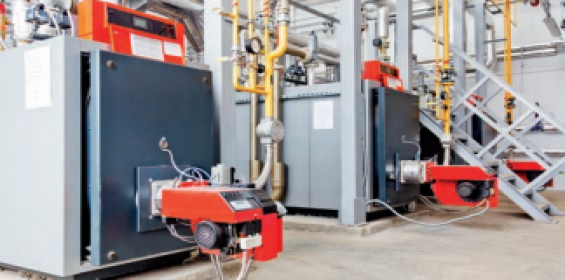The evolution and challenges of burner technology
Published: 03 October, 2024
PWE looks at the critical issues facing burner technology in manufacturing, focusing on environmental regulations and the impact of digitalisation.
Burners are fundamental to manufacturing, providing the essential heat required for processes such as metalworking, ceramics, food production, and chemical processing. As industries strive for greater efficiency and sustainability, burner technology has evolved significantly. Alongside these developments, the rise of digitalisation offers new opportunities and challenges for integrating advanced burner systems into manufacturing facilities.
Advancements and environmental regulations
The evolution of burner technology in industrial settings has been driven by the need for increased energy efficiency, reduced emissions, and enhanced control over production processes. Modern burners are designed to maximise fuel efficiency and minimise environmental impact. Significant advancements include the development of low-NOx burners, high-efficiency models, and multi-fuel options. These innovations are crucial for meeting stringent environmental regulations, which are becoming more rigorous globally.
Environmental regulations pose a substantial challenge for manufacturers. As governments and international bodies tighten emission standards to combat air pollution and climate change, companies must continuously update and modify their burner technology. This necessitates significant investment in research and development to ensure compliance. For instance, low-NOx burners are engineered to produce lower levels of nitrogen oxides, a major contributor to air pollution and smog. By optimising the combustion process, these burners help manufacturers meet environmental standards while maintaining operational efficiency.
Staying ahead of regulatory changes is not without its difficulties. The cost of compliance can be high, particularly for smaller manufacturers with limited resources. Moreover, the process of retrofitting or replacing existing burners to meet new standards can be complex and disruptive. Despite these challenges, adhering to environmental regulations is not optional; failure to comply can result in hefty fines, legal penalties, and damage to a company's reputation.
The impact of digitalisation
In parallel with advancements in burner technology, the digitalisation of industrial manufacturing processes presents transformative potential. Digital tools and platforms offer significant opportunities to improve the efficiency, reliability, and overall performance of burner systems. This seamless integration of digitalisation enhances the capabilities of advanced burner technology, creating a synergistic relationship between the two.
Predictive maintenance, enabled by the Internet of Things (IoT) sensors and machine learning algorithms, allows for the anticipation of equipment failures before they occur. This proactive approach reduces downtime and maintenance costs by addressing issues before they escalate, thereby enhancing the reliability and longevity of burner systems. Advanced data analytics provide deeper insights into burner performance and energy consumption. By analysing historical and real-time data, manufacturers can identify inefficiencies and optimise burner operations for better energy management.
Remote monitoring and control capabilities, facilitated by digital platforms, enable manufacturers to oversee burner systems from a distance. This is particularly valuable for large manufacturing facilities or those with multiple sites, as it allows for centralised management and rapid response to any issues. Furthermore, integrating burners into broader smart manufacturing ecosystems allows for seamless communication between machinery and systems, creating a more cohesive and efficient production process.
However, the digitalisation of burner technology also introduces new challenges. Cybersecurity is a significant concern, as the increased connectivity of digital systems exposes industrial burners to potential cyber threats. Ensuring robust cybersecurity measures are in place is critical to protect sensitive data and maintain operational integrity. Additionally, the initial investment required for digitalisation can be substantial. Integrating new digital systems with existing infrastructure is often complex and time-consuming, necessitating a careful balance of costs and benefits.
Another challenge is the skills gap that digitalisation brings to the fore. The shift towards digitalised burner systems requires a workforce with new skills in data analytics, cybersecurity, and advanced system management. Addressing this gap through targeted training and hiring is essential for the successful implementation of digital technologies. Furthermore, managing the vast amounts of data generated by digital systems poses its own challenges. Effective data management strategies are necessary to ensure that data is accurate, accessible, and actionable.
The intersection of burner technology and digitalisation in industrial manufacturing represents an evolving landscape. While significant advancements have been made in burner efficiency, emission control, and operational flexibility, challenges related to environmental regulations and the integration of digital technologies persist. Negotiating these challenges requires a proactive approach, balancing the need for compliance and efficiency with the opportunities presented by digitalisation.
Manufacturers must remain vigilant in adapting to regulatory changes, investing in advanced burner technologies that meet stringent environmental standards. Simultaneously, they must embrace digitalisation, leveraging predictive maintenance, data analytics, and remote monitoring to enhance burner performance and reliability. By addressing these key issues, industrial manufacturers can position themselves for sustainable growth and success in an increasingly competitive and environmentally conscious market







